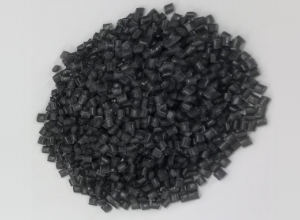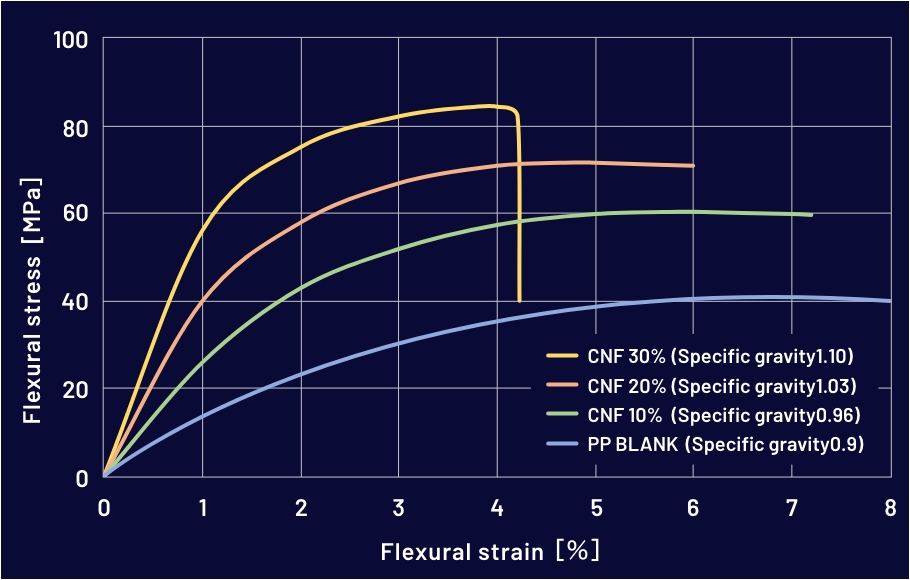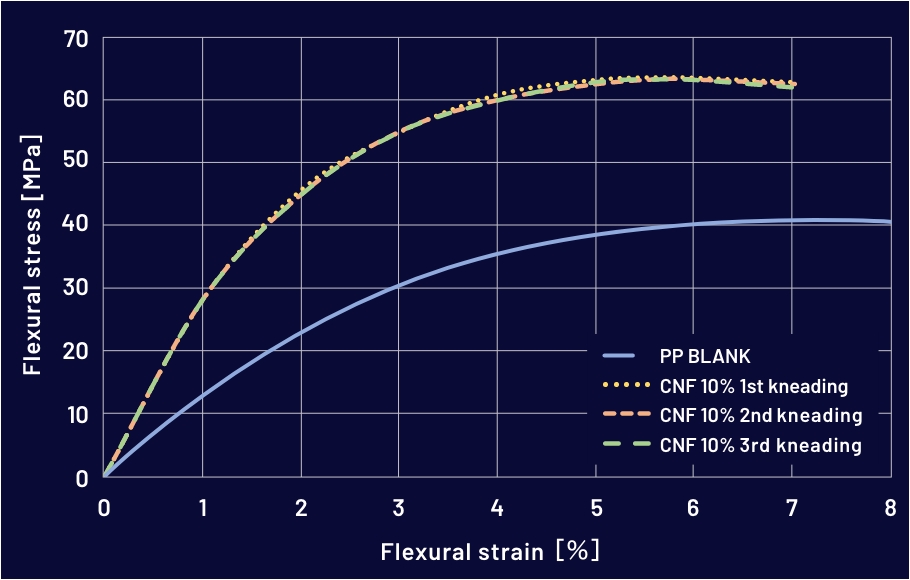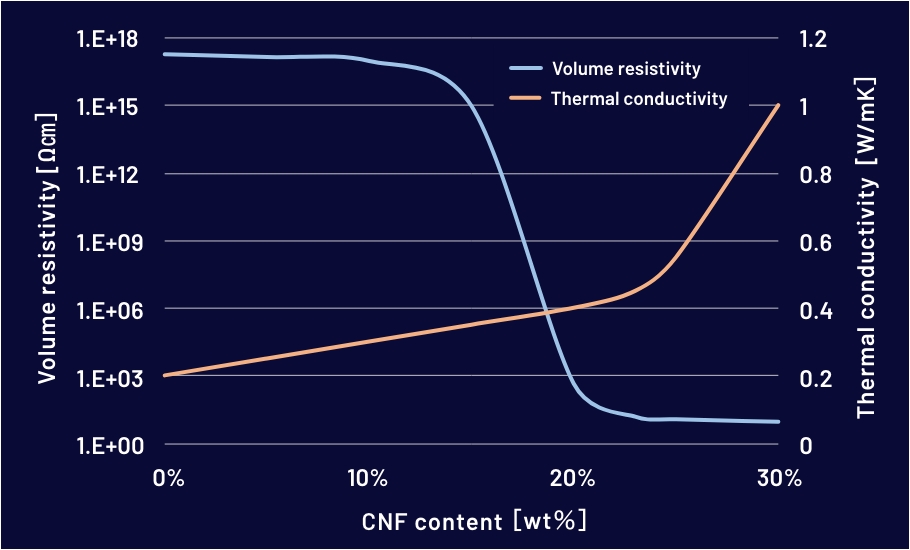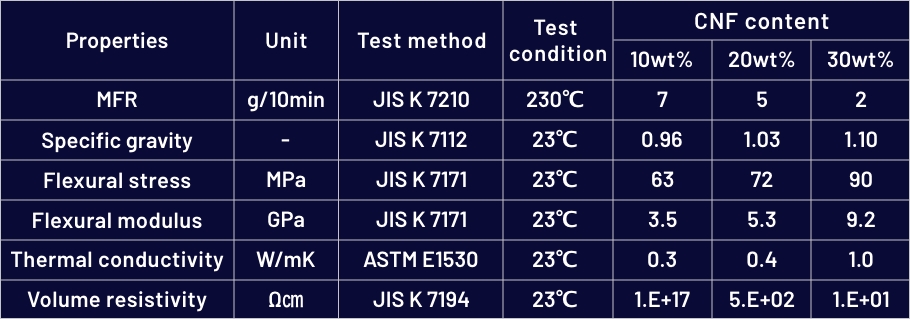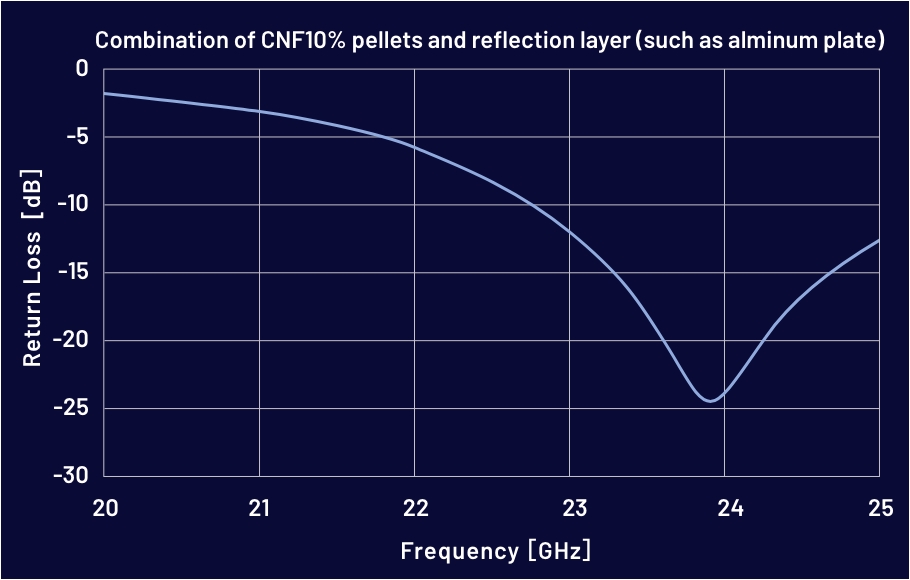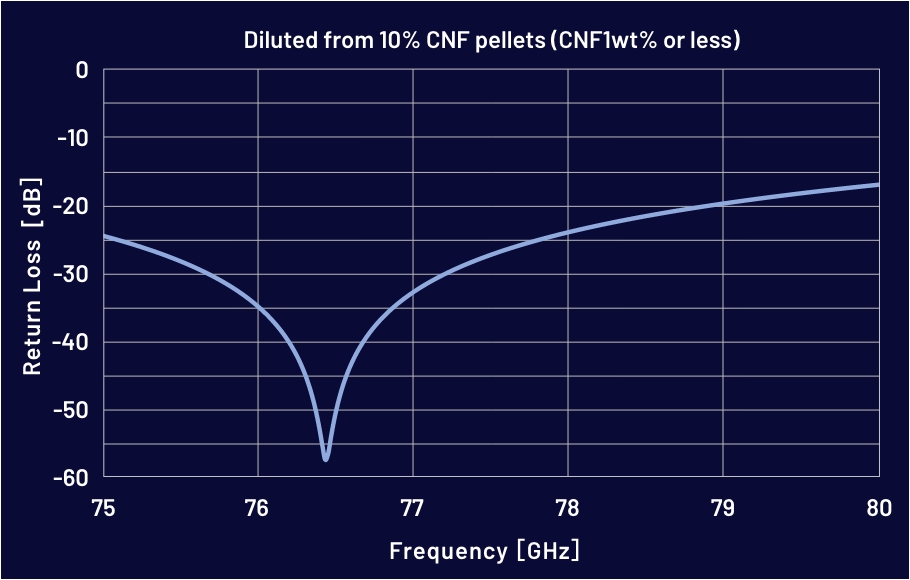The pellets are made by adding 10%, 20%, or 30% of ALMEDIO‘s Carbon Nano Fiber (CNF) to polypropylene (PP) as reinforcement. The addition of 30% of CNF provides a flexural modulus of 9.2 GPa, about 8 times higher than that of the product with no reinforcement. By blending with the CNF as a high concentration such as 30%, not only flexural modulus but also flexural stress is about doubled, the thermal conductivity is 5 times, and the volume resistivity can be greatly changed from an insulator to a conductor. The fiber length of the CNF used is as short as 15um or less, so the surface of the molded product is smooth and recyclable and even if the product is re-molded, the fibers will not break and the properties will not be lost. It is an eco-friendly product that allows the resin to be used without waste.
S-S curves characteristics of High modulus Polypropylene CNF Pellets ①
S-S curves characteristics of High modulus Polypropylene CNF Pellets ②
Volume resistivity and thermal conductivity of High modulus Polypropylene CNF Pellets
Product Data Sheet
*The data described in this sheet are representative examples of measured values obtained under specific conditions, and not imply any kind of guarantee.
Absorption / Suppression of reflections properties of High modulus Polypropylene CNF Pellets
- Application example Resin parts for autonomous car -
* The peak frequency changes depending on the amount of CNF contents and the thickness.
A customized compound processing request other than 10%, 20%, and 30% are also welcomed.
Sample
■ Pellets 1kg~
■ If you are considering the following items or are interested, please contact us via email.
・High strength polypropylene (PP)
・High modulus polypropylene (PP)
・High thermal conductivity polypropylene (PP)
・High electrical conductivity (low volume resistivity) polypropylene (PP)
・Electromagnetic absorption, radio wave shielding polypropylene (PP)
・High recyclability polypropylene (PP)
・Low thermal expansion polypropylene (PP)
・High sliding polypropylene (PP)
・Low wear polypropylene (PP)
Thermoplastic resins other than PP (PE, PA, PBT, PPS, POM, PEEK, etc.) are also welcomed to process compounding.

